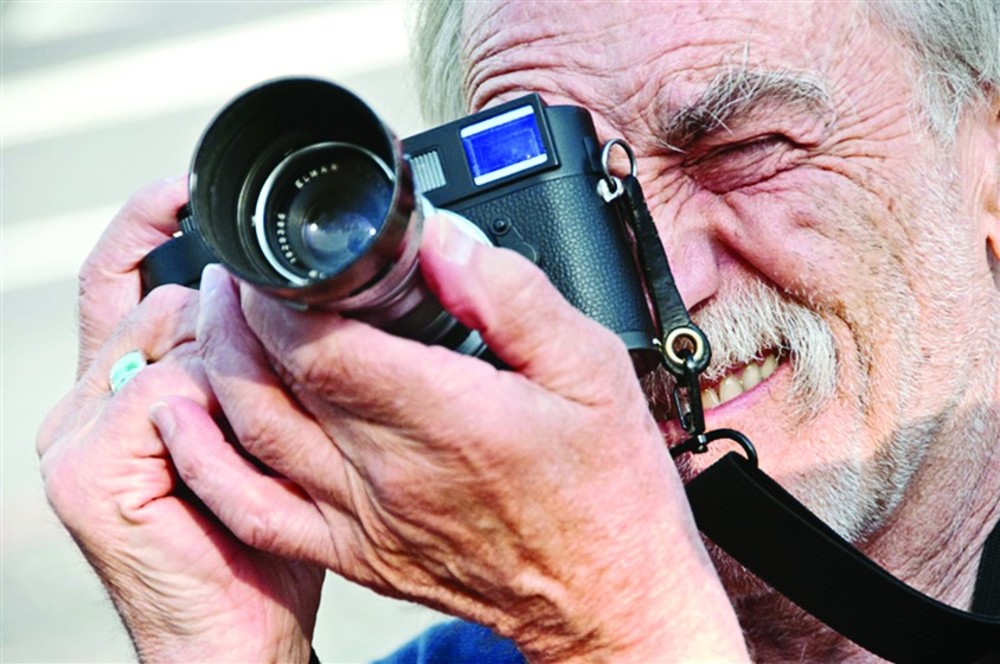Alan Metnick’s photos capture the essence of what happened in Poland
 Photographer Alan Metnick /Joshua Touster
Photographer Alan Metnick /Joshua Touster
There seems to be an invisible rope relentlessly tugging at our hearts and minds to question not only our rich past but the great horror that enveloped it. Like many Jews today, Alan Metnick, a Providence-based photographer and artist, felt the need to visit Auschwitz after promising himself as a young man that he would one day attest to the gruesome reality our ancestors faced.
“I wanted to go to Poland to visit Auschwitz to, in some way, bear witness myself,” Metnick explains. “Although I believe there’s no way to get a true sense of the reality of what happened there as a mere visitor.”
Metnick made the trip to Poland not once but 10 times in the past 10 years. His collection of images, titled “Silence and Stones/Captured by Memory” will be on display for visitors to contemplate at gallery (401) at the Dwares JCC between March 12 and April 16.
Born in Chicago and shaped by the U.S. civil rights movement, Metnick took to photography as a means of capturing reality. He received his bachelor’s degree in history from the University of Wisconsin and initially set out to advance in his academic studies, but over time, succumbed to his growing passion for the arts.
Between work and raising a family, he began taking courses at the Art Institute of Chicago, studying photography under Ken Josephson. This led him to meet with renowned photographer, Aaron Siskind, at the Institute of Design in Chicago. It was this introduction that eventually led Metnick to enroll at the Rhode Island School of Design, where he would go on to earn his graduate degree in photography.
According to reviews of his work, his photography has been described as penetrating, most likely as a result of his documentary-style approach and use of black and white film. His work in serigraphy – or screen printing – drawings, painting and stained glass, illustrates a more vivid and whimsical technique.
In 1976, after a trip to Israel, Metnick began to include Jewish subject matter within his drawings and silkscreens. Since then he has created works including “From the Haggadot” and “David’s Landscape,” which showcase his ability to blend color and shapes as well as evoke a sincere understanding of the Jewish experience.
It was his camera, however, that became the tool that helped him compose the stunning collection of images recounting his time spent in Poland.
“You take a look at how many thousands of clicks of a shutter you make happen and how few results you actually get,” Metnick explains. “The ones I do are always a surprise.”
In 2004, he set off to explore Poland for the first time; the trip unexpectedly turned into a total of 10, the most recent of which was in September. His itinerary included a visit to Krakow and Auschwitz, but after learning of his sister’s experience visiting the small village of Slawatycze, where Metnick’s maternal grandparents had lived, he too wanted to make his way to the town.
According to Metnick, what his sister described and what he soon encountered was, like many others in Poland, an overgrown Jewish cemetery, long forgotten after being destroyed during the war. He explains that all that was left were a few matzevot, or tombstones, and the remnants of a chain-link fence. This ignited something deep within him that subsequently led to his involvement with the Foundation for Preservation of Jewish Heritage in Poland, an organization that works to protect and commemorate Jewish monuments within the country. With their help, and after garnering the approval of village leaders and officials, Metnick, along with a group of former members and descendants of the Slawatycze Jewish community, restored the old cemetery and reinstated it as an important part of the village’s history.
Throughout his trips, Metnick also came to work closely with the privately funded Nissenbaum Family Foundation, an organization that aspires to preserve traces of Jewish culture, and the Forum for Dialogue Among Nations, a Polish nonprofit that aims to eradicate anti-Semitism by engaging with young people.
He says: “There’s a very deep moral imperative to say something was wrong there and something happened. There are still vestiges of that there now, and the best way to deal with it is to educate people while they’re young. If you change enough minds, you can change a society.”
During his visits to Poland, Metnick has amassed a variety of images. Of these, approximately 30 have been chosen for the exhibit. While they vary vastly from matzevot, to the forests surrounding Belzec, to Wolfschanze, they all generate questions and demand thoughtful examination.
“There are images in the exhibit that I hope produce some irritation,” Metnick explains. “There’s this rubbing up of the sacred with the profane there and you’ve got holiness and horror. I hope the images raise some questions.”
For more information, visit AlanMetnick.com. To learn more about the exhibit, “Silence and Stones/Captured by Memory,” contact Erin Mosely, director of Arts & Culture at 401-421-1111, ext. 108 or emosely@jewishallianceri.org. gallery (401) is open Monday through Friday 9 a.m. to 5 p.m. and on Sundays by appointment.
LINDSAY CHANCELLOR is a freelance writer based in Riverside and is currently working in marketing and digital media.







